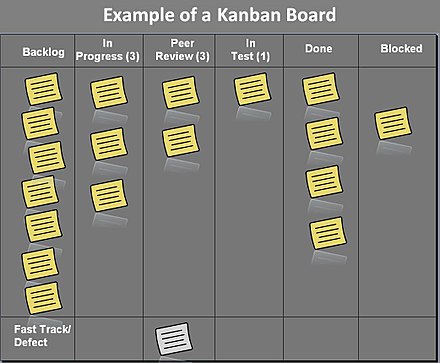Today we are going to talk about Agile Marketing.
Specifically, we are going to look at:
- What agile marketing is (and if you should use it)
- How agile marketing works
- The five types of agile marketing teams
- The seven key values of agile marketing
Consider this a brief introduction to the topic that will give you a better understanding of why this approach is so effective and how you can start using its principles in your team right away.
Let’s get started.
What Is Agile Marketing (And Who Should Use It)?
Agile marketing is a shift in how marketing teams work. It is not a marketing tactic, instead, it is like a new operating system.
It is a value-driven approach that enables marketing teams to quickly adapt, adjust, and optimize their strategies. Meaning you can change your direction quicker than this guy:

Agile marketing aims to maximize value to the end-customer by:
- Focusing on high-impact tasks
- Making data-driven decisions
- Allowing quick implementation
It achieves this by removing barriers to execution.
If you are anything like us, you have experienced that moment where you uncover a great insight that could transform everything, be it:
- Analytics insights
- Breaking news
- Customer feedback
- Collaboration opportunities
- Data points
- Industry developments
But the time between discovery and implementation is just too long. Cumbersome approval processes and red tape can grind your progress to a halt.
This often means the window of opportunity has passed or your competitors beat you to the punch. Less than ideal in today’s fast-paced marketing environment!
Agile marketing works to rectify this by:
- Promoting communication
- Empowering employees
- Responding to change
- Being open to collaboration
- Regularly reviewing data
This makes the approach useful for marketing teams that operate as part of a larger cross-functional team and require approval for all marketing actions.
In the next section, we will look at how agile marketing works.
How Does Agile Marketing Work?
Agile marketing works by building a dedicated cross-functional team that focuses on the execution and review of high-priority deliverables.
This team will work on short-term review cycles. They convene at regular intervals, typically every one to four weeks, to:
- Review progress
- Understand new insights
- Explore strategy changes
- Adjust current goals
- Set new high-priority tasks
The goal of these meetings is always to understand the current situation, explore the data, and facilitate the implementation of changes.
The make-up of this team will depend on your organization’s structure and who is needed for your approval process. We often find teams contain members from the following departments:
- Marketing
- Product
- Legal
- Human resources
- Sales
The types of agile marketing teams
Where agile marketing teams differ from other cross-functional teams is in their structures. Teams are typically set up using one (or a combination) of the following structures:
- Scrum Teams: uses “sprints”, individual assignments, and daily updates
- Kanban: a “flow” based workflow that visualizes steps and current objectives
- Scrumban: a hybrid of the two previous systems
- Lean: a small, process-focused team that uses minimal people to speed reactions
- Hybrid: a unique team or a mixture of the above
Let’s take a quick look at each of these teams.
1. Scrum Teams
Scrum teams aim to reduce distractions and increase completion of high priority tasks. This is done by committing to tasks for a specific time frame referred to as a “sprint”.
These are really bare-bones overviews of each type of team.
They can each be infinitely more complex than this. But, it should provide a good base understanding!

During this time period, there will be:
- Sprint planning: understanding what needs to be done during the sprint
- Daily updates: to evaluate progress and roadblocks
- Regular reviews: to implement any necessary changes
- Retrospective analysis: to improve the process for the next sprint
This promotes high levels of accountability, productivity, and actionability.
A Scrum Master leads this process and is responsible for:
- Establishing priorities
- Delegating tasks
- Creating the to-do lists
- Managing the backlog of tasks
- Acquiring necessary resources
- Managing communication and meetings
Scrum teams are used by around 21% of agile marketing teams.
2. Kanban Teams
Kanban teams create focus through visibility.
At the most simplistic level, this type of team operates using a Kanban board. This a central board, visible to all team members, that shows all ongoing tasks and their current status.

Credit: Wikipedia
Each team will have their own customized version of this board, but at their core, they must show the progression from:
- Incomplete
- In progress
- Complete
This enables you to see where effort is being spent and understand if this is the most effective use of the marketing team’s resources.
You can bring further focus and clarity by adding work in progress limits. These stop new tasks from being added to the board before existing ones are complete.
Kanban teams are used by around 9% of agile marketing teams.
3. Scrumban Teams
Scrumban teams utilize a mixture of the Scrum and Kanban systems.
Scrumban aims to keep the rigid structure of the Scrum Team. It still works on time-based deliverables with regular meetings, updates, and reviews.
These tasks are then displayed using a Kanban board with work in progress limits. This allows teams to visually understand and review deliverables without losing sight of the current goal.
Scrumban is used by around 4% of agile marketing teams.
4. Lean Teams
Lean marketing teams look to deliver the most value by using the fewest resources.
These are small and contain only essential personnel who focus only on the most essential tasks. This allows them to stay agile and quickly pivot with new information.
Lean teams do not follow any specific structure and can rework their frameworks based on the task at hand.
Lean teams are used by around 11% of agile marketing teams.
5. Hybrid Teams
Hybrid teams are the most common type of agile marketing team with 54% employing this approach.
These teams are unique to every organization and draw on the philosophies in the previous section to create a fit-for-purpose team.
No matter what framework or style of team your organization uses, there are some key principles that make them function.
Let’s take a closer look:
The Values Of Agile Marketing Teams
Agile marketing teams often look different in style, but they must share the same values to remain effective.
There are seven principles initially outlined in the Agile Manifesto:
- Validated learning over opinions and conventions: decisions and changes to the marketing strategy should be data-driven.
- Customer-focused collaboration over silos and hierarchy: open communication and teamwork that focuses on delivering the best result for the customer
- Adaptive and iterative campaigns over “Big Bang” campaigns: make consistent, incremental changes instead of looking for that one big win
- Process of discovery over static prediction: actively look for data that confirms or alters your approach, do not operate from opinion-based guesswork
- Flexible planning over rigid planning: plan for pivots in your strategy and remain open to change, do not treat any plan as sacred
- Respond to change over following a plan: sometimes the best option is to throw out the current plan and use the data you are presented with
- Many small experiments over a few large bets: consistently test data-driven theories on small aspects of your strategy, instead of trying to overhaul everything at once
By operating with these values your agile marketing team can pivot and change at high speed. They go against the traditional corporate structure, but that is the idea!

Manage all your social media accounts in one place.
Craft, schedule, & auto-post content to all your social channels, then track analytics and manage interactions from a single, easy-to-use dashboard.
Agile Marketing In A Nutshell
Agile marketing is a new way for marketing teams to approach their work. It is not a marketing tactic, rather a new operating system for your team.
Agile marketing teams are cross-functional and focus on completing high-value tasks and responding to data-driven changes by reducing barriers to execution.
This is done by using team frameworks such as:
- Scrum teams
- Kanban teams
- Scrumban team
- Lean team
- Hybrid teams
No matter what framework you are using, you will need to adhere to operate from the seven agile marketing values:
- Validated learning over opinions and conventions
- Customer-focused collaboration over silos and hierarchy
- Adaptive and iterative campaigns over “Big Bang” campaigns
- Process of discovery over static prediction
- Flexible planning over rigid planning
- Respond to change over following a plan
- Many small experiments over a few large bets
Loomly is the Brand Success Platform that helps marketing team collaborate more efficiently: start your 15-day free trial now.



